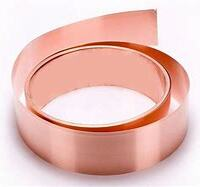1. Introduction
Copper prices surged over 4% in the last 48 hours due to tightened supply chains and increased demand from renewable energy projects, according to Metal Bulletin (May 22, 2024). This spike makes now an ideal time to recycle copper wire—but only if it’s properly stripped. Bare, clean copper fetches significantly higher scrap value than insulated or burnt wire.

Stripping copper wire isn’t just about profit—it’s also about safety and environmental responsibility. Burning insulation releases toxic fumes, while improper handling can damage the copper itself. In this guide, we’ll show you the best way to strip copper wire for scrap, whether you’re dealing with thin household cables or thick industrial rods.
2. Why Proper Stripping Matters
Scrap yards pay top dollar for clean, bare copper. Insulated wire is often discounted by 30–50%, and burnt wire may be rejected entirely. Plus, many recyclers now require proof that wire wasn’t burned due to environmental regulations.
Using the right technique also preserves the integrity of the copper. Damaged or nicked strands reduce weight and value. Whether you’re working with copper strip wire, copper rod for welding, or standard electrical cable, clean stripping maximizes return.
3. Tools You’ll Need
- Manual wire strippers (for small jobs)
- Automatic or motorized wire stripper (for volume)
- Utility knife (use with caution)
- Heat gun (optional, for stubborn insulation)
- Safety gloves and goggles
Avoid using pliers, hammers, or open flames. Burning copper wire for scrap is illegal in many areas and destroys resale value.
4. Step-by-Step: Best Way to Strip Copper Wire
4.1. Sort Your Wire First
Separate copper wire by type: THHN, Romex, coaxial, or appliance cords. Also identify any copper strip, copper beryllium strip, or flat copper strip—they may need different handling.

Remove non-copper components like steel armor or aluminum shielding. Pure copper—especially from sources like copper earth rod remnants or copper bus bar offcuts—commands premium pricing.
4.2. Use a Manual Wire Stripper (For Small Batches)
Ideal for home recyclers or electricians with leftover scraps. Choose a stripper matched to wire gauge.
Cut a small slit in the insulation, then pull it off cleanly. Don’t twist or yank—this can stretch or break copper strands.
This method works well for stripping copper wire under 10 AWG and is perfect for recovering copper strip wire from old electronics.
4.3. Use an Automatic Wire Stripper (For Bulk Jobs)
If you’re stripping wire for scrap regularly, invest in a motorized stripper. These machines can process hundreds of feet per hour with minimal effort.
Feed the wire in, and the machine slits and peels the insulation without damaging the copper inside. Great for stripping long copper wire from demolition sites or data centers.
Look for models that handle multiple gauges—some even process copper strip roll or thin copper strips used in transformers.
4.4. What NOT to Do: Avoid Burning or Chemical Stripping

Never burn insulation off. It releases dioxins and furans—harmful to health and the environment. Most reputable scrap yards test for burnt copper and will reject it.
Chemical strippers are messy, slow, and often corrode the copper surface, lowering its grade. Stick to mechanical methods.
5. Special Cases: Stripping Copper Rods and Strips
5.1. Copper Rod and Round Bar
Solid copper rods—like copper round bar or rod copper used in grounding—don’t have insulation. But they may have oxidation or coatings.
Clean with vinegar or citric acid, then dry thoroughly. If it’s a copper bonded earthing rod or copper clad steel ground rod, note that only the outer layer is copper; these are worth less than solid copper.
5.2. Flat Copper Strips
Items like copper earth strip 25x3mm, nickel plated copper strip, or copper edging strip usually come bare. However, check for lacquer or tape residue.
Wipe with isopropyl alcohol to remove contaminants. Store flat to avoid kinks—bent strips may be downgraded at scrap yards.
6. Maximizing Your Profit
Call local scrap yards first. Ask: “Do you accept stripped copper wire?” and “What’s your current copper strip price?” Prices vary widely—copper rod price and copper strip near me rates can differ by $0.50/lb within the same city.
Keep copper categories separate: bare bright, #1 copper, #2 copper, and copper alloys like beryllium copper strip. Mixing reduces your payout.
Weigh your load accurately. Even small amounts of plastic or steel contamination can slash your earnings.
7. Conclusion
Stripping copper wire for scrap doesn’t have to be tedious or dangerous. With the right tools and techniques, you can safely recover high-value copper—from standard wiring to specialty items like copper strip roll or copper bonded ground rod. Given today’s rising copper prices, doing it right pays off fast. Skip the shortcuts, avoid burning, and always aim for clean, bare copper to get the best return at the yard.
Our Website founded on October 17, 2012, is a high-tech enterprise committed to the research and development, production, processing, sales and technical services of ceramic relative materials such as How. Our products includes but not limited to Boron Carbide Ceramic Products, Boron Nitride Ceramic Products, Silicon Carbide Ceramic Products, Silicon Nitride Ceramic Products, Zirconium Dioxide Ceramic Products, etc. If you are interested, please feel free to contact us.

